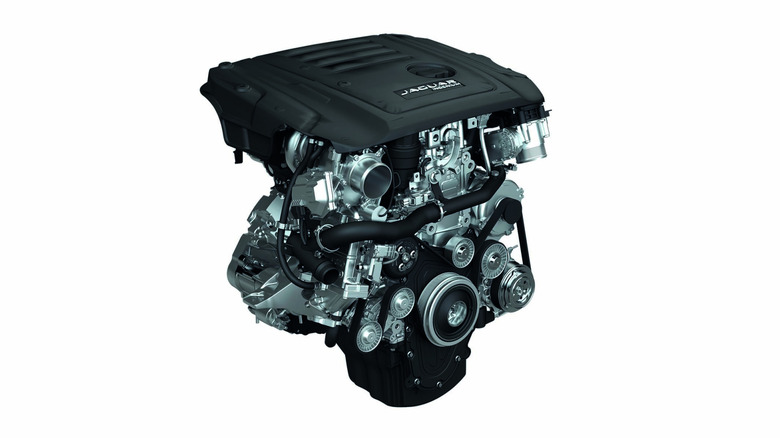Who Makes Jaguar Engines And Where Are They Manufactured?
Jaguar engines are made by Jaguar Land Rover (JLR), a subsidiary of Tata Motors Limited, one of the leading vehicle manufacturers in India. Tata purchased Jaguar and Land Rover from Ford Motor Company in 2008 for $2.3 billion. In 2011, JLR announced a major investment program that would lead to the development of a new engine family, making both Jaguar and Land Rover self-sufficient in the engine department and eliminating the need to purchase engines from other companies for their vehicles. These engines would be called Ingenium.
The first plant to produce Ingenium engines was JLR's Engine Manufacturing Centre in Wolverhampton, UK, in January 2015. As of July 2020, the plant had made more than 1.5 million Ingenium engines in both diesel and gasoline-powered versions. The Wolverhampton plant was joined in 2017 by an additional engine factory located in Changshu, China, a joint venture with its Chinese partner Chery Automobile Ltd. The Chinese plant produced the Ingenium 2.0-liter four-cylinder gasoline engines for Jaguars (and Land Rovers) manufactured in China.
As with many other foreign automotive brands in China, JLR is experiencing declining sales in the country. Recently, the company has made the decision to end production of all models in China for both Jaguar and Land Rover over the next 14 months. This could also be related to Jaguar's cancellation of all its legacy internal combustion engine (ICE) vehicles in 2024, as it reinvents itself as an all-electric vehicle (EV) brand. Jaguar revealed a brash new concept car in late 2024, which has gotten some online praise.
What else should you know about Jaguar's Ingenium engines?
Jaguar's Ingenium engines were created to enhance performance, reduce operating costs, and boost environmental sustainability. The high-efficiency design features roller-bearing camshafts, turbocharging, and the ability to function as a hybrid powertrain. The Jaguar XE, an all-new mid-size premium sports sedan, was the first to feature the Ingenium 2.0-liter four-cylinder engine under its hood. The Ingenium engine can be placed either longitudinally or transversely and is suitable for rear-wheel drive, front-wheel drive, or all-wheel drive applications. The displacement of each cylinder, as well as the number of cylinders, can be adapted for the specific use case of the engine and vehicle. Ingenium engines have provided power for diesel, gasoline, and gasoline-electric plug-in hybrid electric vehicle (PHEV) powertrains. An excellent example of the Ingenium was the supercharged V8 engine in the 2024 F-Type 75, which gave an old-school Jaguar one last time to shine.
A good question to ask here is, "Why does Jaguar need ICE plants if the brand is going all electric?" In response, the JLR corporate website clearly states, "Before the end of the decade, Range Rover, Discovery and Defender collections will all offer pure‑electric options, while Jaguar will be entirely electric." This means that while Jaguar will go all-EV, Land Rover (LR) will not, hedging its bets with a combination of internal combustion, PHEVs, and EVs. For this, LR definitely requires an engine plant, while Jaguar can use the plant's capabilities to produce electric motors and drivetrains there.

